Trace A. DeMeyer's Blog
October 15, 2025
Andre StrongBearHeart is reviving Indigenous culture and decolonizing the land
 StrongBearHeart is used to playing the role of cultural ambassador. He serves as the Tribal Historical Preservation Officer for the Hassanamisco Tribe of Nipmuc Nation, and is the founder and creative director of the nonprofit No Loose Braids.
StrongBearHeart is used to playing the role of cultural ambassador. He serves as the Tribal Historical Preservation Officer for the Hassanamisco Tribe of Nipmuc Nation, and is the founder and creative director of the nonprofit No Loose Braids.
Andre StrongBearHeart Gaines-Roberson Jr. is a Nipmuc cultural steward who teaches traditional Indigenous arts and advocates for Indigenous communities to have access to and manage conservation land. His efforts have brought attention to the declining supply of Atlantic white cedar trees in Nipmuc territory. These cedar saplings are essential for constructing the traditional dwellings of Eastern Woodlands tribes. (via WBUR)
LISTEN AND READ MORE: https://www.wbur.org/news/2025/09/29/andre-strongbearheart-the-makers
Questions? EMAIL: tracelara@pm.me170 years ago, the US Army massacred a Lakota village. Their plundered belongings are now back in Nebraska.
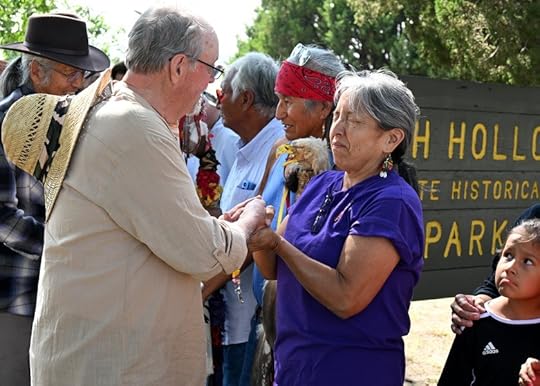 Karen Little Thunder and her cousin Phil Little Thunder greet attendees of a memorial ceremony in Ash Hollow State Historical Park Sept. 6, 2025. (Jessica Wade, Nebraska Public Media)
Karen Little Thunder and her cousin Phil Little Thunder greet attendees of a memorial ceremony in Ash Hollow State Historical Park Sept. 6, 2025. (Jessica Wade, Nebraska Public Media) On Sept. 3, 1855, the U.S. Army launched an attack on an encampment of Sicangu and Ogallala Sioux at Bluewater Creek, just north of Lewellen, Nebraska. The 600 soldiers massacred more than 86 Native Americans, most of them women and children. Many others were taken captive and force-marched to Fort Laramie in Wyoming.
The events of Sept. 3, 1855, were set in motion the year before, by what historians call the “Mormon cow incident.”
Questions? EMAIL: tracelara@pm.me‘It’s no longer being covered up and denied’
Discovering Oregon’s hidden Native American boarding school historyBy Kami Horton (OPB)
While researching Oregon’s Native American boarding school history, a Klamath Tribes woman uncovered her own family’s story.
WATCH HERE : “Uncovering Boarding Schools — Short Version for Educators”
On Indigenous Peoples Day, Gabriann “Abby” Hall did a presentation at a Native American event at Central Oregon Community College in Bend.
Hall’s first talk was four years ago, also on the holiday. She says she believes she has given about 50 presentations on Native American boarding school history to various groups around the state.
‘Your history matters’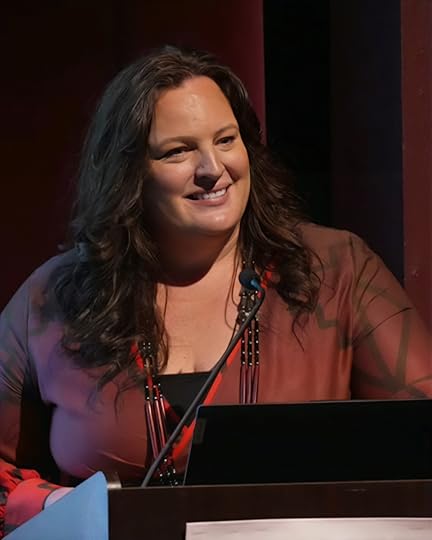
In this image from 2024, Gabriann Hall gives a presentation on her work in Klamath history and culture. Courtesy Jeff Kastner
As a Klamath Tribes member, Hall says she has always been interested in Native American history. But in recent years, she has developed a passion for sharing it.
“What I realized after years of education and studying diverse history in depth for multiple different groups was that when that history is not talked about, it sends a message that your history doesn’t matter.”
After discovering surprising details about her own family’s history, she decided to focus on researching and telling the story of federal Native American boarding school policy.
“I knew my grandma had gone to Canyonville Bible Academy,” Hall said. “I just assumed it was like a camp or a day school.”
Those ideas changed during a conversation with OPB reporter Rob Manning in August 2021.
“I sarcastically said, ‘My grandma went to Canyonville Bible Academy — that was probably a boarding school,’" Hall said. “After I got off the phone, I looked it up, and their website said they had taken boarders.”
Hall had no idea her grandmother and many other students from her tribe lived at religious institutions.
“I didn’t realize that she had been a boarder there, that it was a boarding school where they took in Native Americans,” Hall said.
As part of federal policy, the government often paid this tuition and encouraged, or often forced, thousands of Indigenous children to attend and assimilate.
A national history, a personal story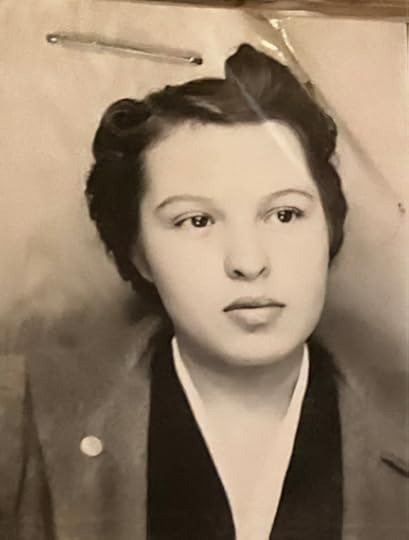
This photograph taken from boarding school documents shows Abby Hall's grandmother, Klamath Tribes member Marilyn Mitchell, in about 1939.
Courtesy of Gabriann Hall
Hall wanted to know more about her grandmother’s story. She began digging into any records she could find.
Hall discovered that her grandmother, Marilyn Mae Mitchell, was born on the Klamath Reservation in 1922. Her mother died at a young age, leaving Marilyn and two other daughters to live with extended family members. Eventually, the girls ended up in boarding schools.
Marilyn attended Canyonville Bible Academy in Douglas County, Ore. and later Haskell Indian School in Kansas.
Her younger sisters went to Stewart Indian School in Nevada.
Hall says her grandmother rarely spoke about those years.
“My dad just said, ‘They didn’t talk about it.’”
For Hall, uncovering her grandmother’s story gave new purpose to her work: “I feel that it’s so important for this history to be acknowledged.”
She adds, “It’s no longer being covered up and denied.”
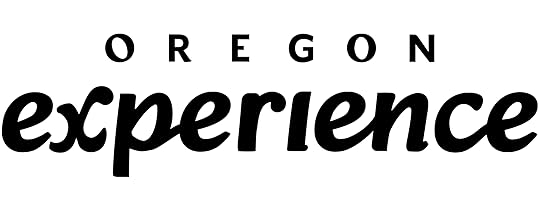
LEARN MORE
OPB follows Abby Hall’s journey to uncover her family history with boarding schools in the “Oregon Experience” documentary Uncovering Boarding Schools: Stories of Resistance and Resilience" airing on OPB-TV on Monday, Nov. 3, 2025, at 9 p.m. and on the PBS website.
UNCOVERING BOARDING SCHOOLS: Short version for educators
“Oregon Experience” also produced a short film adapted from the full-length documentary. In under 10 minutes, this video is designed for classrooms, community groups, or anyone who wants an overview of the history of U.S. Native American boarding school policy.
The short film for educators is available at the top of the page or on the OPB YouTube account.
SEE MORE: https://www.opb.org/article/2025/10/13/oregon-experience-native-american-boarding-schools-history/
NPR: Highlighting Indigenous stories from across NPR's network
Questions? EMAIL: tracelara@pm.meOctober 14, 2025
Rescue and recovery efforts underway as remnants of Typhoon Halong hit western Alaska
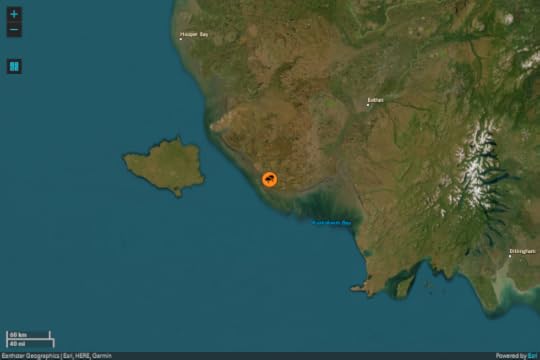 Rescue and recovery efforts began Sunday in western Alaska as a major storm caused by remnants of Typhoon Halong hit coastal communities with massive storm surge, flooding and hurricane-force winds up to 100 mph.
Rescue and recovery efforts began Sunday in western Alaska as a major storm caused by remnants of Typhoon Halong hit coastal communities with massive storm surge, flooding and hurricane-force winds up to 100 mph. The storm bore down on the lower Kuskokwim River delta region early Sunday morning with the most significant damage reported in Kipnuk, Kwigillingok, and Napakiak.
The U.S. Coast Guard and Alaska Air National Guard, and Alaska Army National Guard dispatched rescue aircraft to conduct search and rescue efforts, and begin delivering needed supplies.
“Search and rescue is the priority at this time,” said division spokesperson Jeremy Zidek by email. He said rescue teams searched the multiple homes that were torn up and floating in nearby waters.
On Sunday, the Alaska State Troopers reported at least 18 people were rescued in Kwigillingok and at least 16 people were rescued in Kipnuk.
Gov. Mike Dunleavy extended a disaster declaration first issued on Oct. 8 to coordinate disaster response and recovery resources for communities in the Yupitt, Pribilof Island and Lower Kuskokwim Regional Education Attendance Areas.
“Every effort will be made to help those hit by this storm. Help is on the way,” Dunleavy said.
Representatives of coastal villages reported on an afternoon call hosted by the nonprofit Association of Village Council Presidents that residents were sheltering in place, many in local schools, and were assessing the damage.
The storm caused major erosion, damaging boardwalks, roads and bridges. It sank boats and damaged homes with high winds. Some homes were blown off foundations and turned over. Some communities reported power outages and a loss of cell service, and were relying on backup generators and Starlink satellites for wifi connection.
Winds gusted up to 100 miles per hour in Tooksook Bay, 91 mph in St George Island, and up to 76 mph in Bethel and St Mary’s, according to the National Weather Service Alaska Region.Native America Calling:Questions? EMAIL: tracelara@pm.me
October 12, 2025
Columbus?
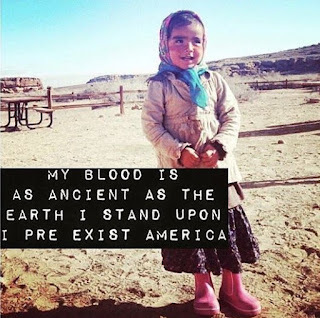
What do you know about Columbus whosailed the ocean blue in 1492…?
The primary outcome of Columbus’s voyage to the new worldwas the enslavement of hundreds of thousands of Native Americans and thepilfering of 45,000 tons of gold and silver (valued at £10 trillion in moderncurrency).—The History of the World Part 5—Age of Plunder, BBC (2018) Film Review byDr. Stuart Bramhall
Looting, too? Well that’s not good. In 1492 Columbus, the real-life-slave trader-pirate,was capturing humans for Spain, and lands three boats in Hispaniola. (Carib People say Columbus, an Italian guyworking for Spain, was lost at sea.)
It's INDIGENOUS PEOPLE'S DAY... (every day)
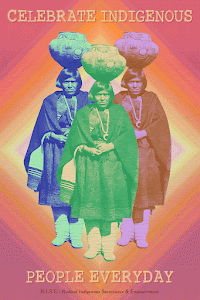
SO PLEASE take a moment to understand colonization and myths.
There are great posts on this website... use the SEARCH BOX and use the word: Columbus...
Questions? EMAIL: tracelara@pm.me
October 10, 2025
Who Gets to be Indian?
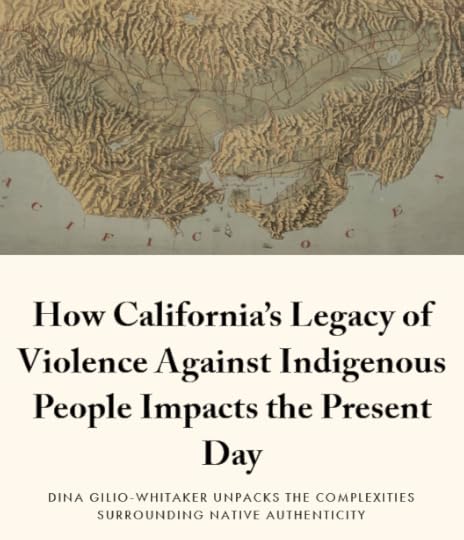
With the largest population of Native Americans in the US, California has more tribes, federally recognized and non-recognized, than any other state.
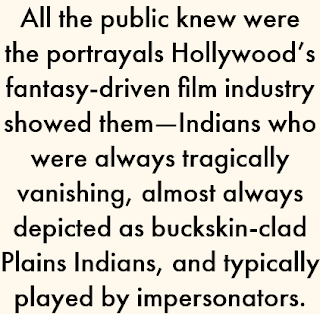
READ: https://lithub.com/how-californias-legacy-of-violence-against-indigenous-people-impacts-the-present-day/
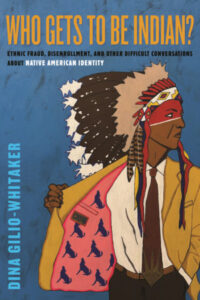
Excerpted from Who Gets to Be Indian?: Ethnic Fraud, Disenrollment, and Other Difficult Conversations About Native American Identity by Dina Gilio-Whitaker. Copyright 2025. Excerpted with permission by Beacon Press.
There is so much BAD HISTORY... bad paper, or no history... Trace
Questions? EMAIL: tracelara@pm.meRewriting the historical context for Native Americans
Rewriting the historical context for Native Americans
Culture keepers and historians are closely watching President Donald Trump’s review of the Smithsonian’s National Museum of the American Indian (NMAI) to eliminate what he calls derisive or partisan narratives.With facilities in Washington, D.C., Maryland and New York City, the NMAI is among eight institutions that are currently under review. Exhibits include Native American perspectives on historical documents and events that include treaties, Indian Boarding Schools, the Termination Era, the American Indian Movement, and the Indian Child Welfare Act, among many others. Those watching are concerned Trump’s directive could permanently alter how those topics are presented to the public. NMAI also develops educational curricula that counters incomplete instruction on historical events, like Thanksgiving. Tune into Native America Calling to hear from those who were instrumental in NMAI’s founding, as well as get perspective on Defense Secretary Pete Hegseth’s announcement that soldiers that took part in the Wounded Knee Massacre would retain their Medals of Honor.
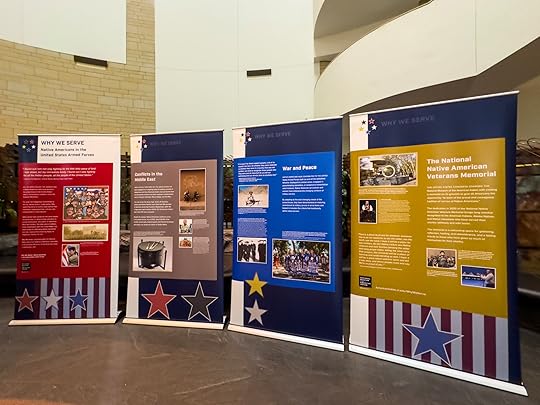 A display about Native Americans in the U.S. armed forces is among the many exhibits created by the National Museum of the American Indian, shown here on the National Mall in Washington, D.C. Photo by Indianz.Com (CC BY-NC-SA 4.0)
A display about Native Americans in the U.S. armed forces is among the many exhibits created by the National Museum of the American Indian, shown here on the National Mall in Washington, D.C. Photo by Indianz.Com (CC BY-NC-SA 4.0)Guests on Native America CallingDr. Suzan Shown Harjo (Cheyenne and Hodulgee Muscogee), president of the Morning Star Institute, a founding trustee of the National Museum of the American Indian, and recipient of the Presidential Medal of FreedomRick West Jr. (Cheyenne and Arapaho), CEO emeritus of the Autry Museum of the American West and founding director of the National Museum of the American IndianOJ Semans Sr. (Rosebud Sioux), co-executive director of Four Directions Vote
Questions? EMAIL: tracelara@pm.me
Operation BabyLift records found
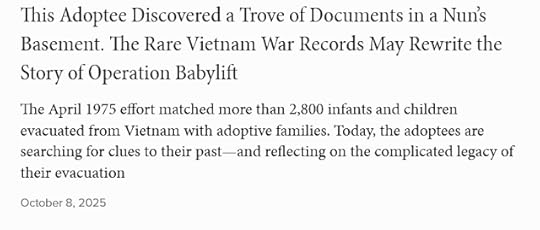 READ: https://www.smithsonianmag.com/history/this-adoptee-discovered-a-trove-of-documents-in-a-nuns-basement-the-rare-vietnam-warrecords-rewrite-the-story-of-operation-babylift-180987435/
READ: https://www.smithsonianmag.com/history/this-adoptee-discovered-a-trove-of-documents-in-a-nuns-basement-the-rare-vietnam-warrecords-rewrite-the-story-of-operation-babylift-180987435/Questions? EMAIL: tracelara@pm.me
October 8, 2025
U.S. Medals of Dishonor by Sean Sherman
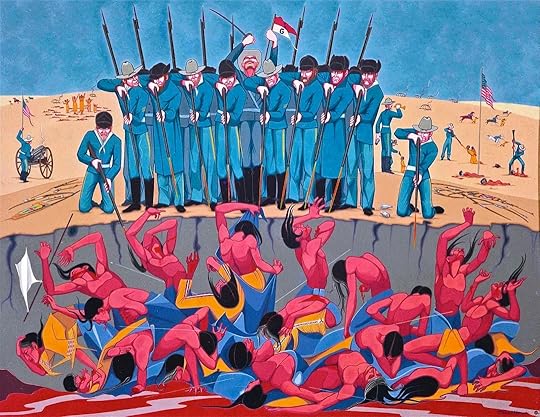
America never runs out of ways to gaslight history.
Last week, Pete Hegseth, the former Fox talking head who’s now somehow Secretary of War in Trump’s Amerikkka 2.0, looked into a camera and announced that the U.S. soldiers who slaughtered Lakota families including women, children, elderly and babies at Wounded Knee in 1890 will keep their Medals of Honor. According to him, this decision is “final” and “no longer up for debate.” Translation: sit down, shut up, and salute a massacre.
U.S. Medals of Dishonor by Sean Sherman
The Cowardice of Pete Hegseth and the Whitewashing of American Violence
Read on SubstackHere’s Black Elk’s first hand account of the events of that day in 1890, it’s a little long but an important eye witness account from a Lakota relative:
Questions? EMAIL: tracelara@pm.me
“That evening before it happened, I went into Pine Ridge and heard these things, and while I was there, soldiers started searching for where the Big Foots were. These made about five hundred soldiers that were there the next morning. When I saw them starting I felt that something terrible was going to happen. That night I could hardly sleep at all. I walked around most of the night.
In the morning I went out after my horses, and while I was out I heard shooting off toward the east, and I knew from the sound that it must be wagon-guns going off. The sounds went right through my body, and I felt that something terrible would happen.
When I reached camp with the horses, a man rode up to me and said: “Hey—hey—hey! The people that are coming are fired on! I know it!”
I saddled up my buckskin and put on my sacred shirt. It was one I had made to be worn by no one but myself. It had a spotted eagle outstretched on the back of it, and the daybreak star was on the left shoulder, because when facing south that shoulder is toward the east. Across the breast, from the left shoulder to the right hip, was the flaming rainbow, and there was another rainbow around the neck, like a necklace, with a star at the bottom. At each shoulder, elbow, and wrist was an eagle feather; and over the whole shirt were red streaks of lightning. You will see that this was from my great vision, and you will know how it protected me that day.
I painted my face all red, and in my hair I put one eagle feather for the One Above. It did not take me long to get ready, for I could still hear the shooting over there.
I started out alone on the old road that ran across the hills to Wounded Knee. I had no gun. I carried only the sacred bow of the west that I had seen in my great vision. I had gone only a little way when a band of young men came galloping after me. The first two who came up were Loves War and Iron Wasichu. I asked what they were going to do, and they said they were just going to see where the shooting was. Then others were coming up, and some older men.
We rode fast, and there were about twenty of us now. The shooting was getting louder. A horseback from over there came galloping very fast toward us, and he said: “Hey—hey—hey! They have murdered them!” Then he whipped his horse and rode away faster toward Pine Ridge.
In a little while we had come to the top of the ridge where, looking to the east, you can see for the first time the monument and the burying ground on the little hill where the church is.
That is where the terrible thing started. Just south of the burying ground on the little hill a deep dry gulch runs about east and west, very crooked, and it rises westward to nearly the top of the ridge where we were. It had no name, but the Wasichus sometimes call it Battle Creek now. We stopped on the ridge not far from the head of the dry gulch. Wagon-guns were still going off over there on the little hill, and they were going off again where they hit along the gulch.
There was much shooting down yonder, and there were many cries, and we could see cavalrymen scattered over the hills ahead of us. Cavalrymen were riding along the gulch and shooting into it, where the women and children were running away and trying to hide in the gullies and the stunted pines.
A little way ahead of us, just below the head of the dry gulch, there were some women and children who were huddled under a clay bank, and some cavalrymen were there pointing guns at them. We stopped back behind the ridge, and I said to the others: “Take courage. These are our relatives. We will try to get them back.” Then we all sang a song which went like this:
A thunder being nation I am, I have said. A thunder being nation I am, I have said: You shall live. You shall live. You shall live. You shall live.
Then I rode over the ridge and the others after me, and we were crying: “Take courage! It is time to fight!” The soldiers who were guarding our relatives shot at us and then ran away fast, and some more cavalrymen on the other side of the gulch did too. We got our relatives and sent them across the ridge to the northwest where they would be safe.I had no gun, and when we were charging, I just held the sacred bow out in front of me with my right hand. The bullets did not hit us at all.
We found a little baby lying all alone near the head of the gulch. I could not pick her up just then, but I got her later and some of my people adopted her. I just wrapped her up tighter in a shawl that was around her and left her there. It was a safe place, and I had other work to do.
The soldiers had run eastward over the hills where there were some more soldiers, and they were off their horses and lying down. I told the others to stay back, and I charged upon them holding the sacred bow out toward them with my right hand. They all shot at me, and I could hear bullets all around me, but I ran my horse right close to them, and then swung around. Some soldiers across the gulch began shooting at me too, but I got back to the others and was not hurt at all.
By now many other Lakotas, who had heard the shooting, were coming up from Pine Ridge, and we all charged on the soldiers. They ran eastward toward where the trouble began. We followed down along the dry gulch, and what we saw was terrible. Dead and wounded women and children and little babies were scattered all along there where they had been trying to run away.
The soldiers had followed along the gulch, as they ran, and murdered them there. Sometimes they were in heaps because they had huddled together, and some were scattered all along.
Sometimes bunches of them had been killed and torn to pieces where the wagon-guns hit them. I saw a little baby trying to suck its mother, but she was bloody and dead.
There were two little boys at one place in this gulch. They had guns and they had been killing soldiers all by themselves. We could see the soldiers they had killed. The boys were all alone there, and they were not hurt. These were very brave little boys.
When we drove the soldiers back, they dug themselves in, and we were not enough people to drive them out from there. In the evening they marched off up Wounded Knee Creek, and then we saw all that they had done there.
Men, women, and children were heaped and scattered all over the flat at the bottom of the little hill where the soldiers had their wagon-guns, and westward up the dry gulch all the way to the high ridge, the dead women and children and babies were scattered.
When I saw this I wished that I had died too, but I was not sorry for the women and children. It
It was better for them to be happy in the other world, and I wanted to be there too. But before I went there I wanted to have revenge. I thought there might be a day, and we should have revenge.” - Black Elk, 1890
Hopi tribe in Arizona planned to connect 600 homes to electricity. Then the funding was cut
READ MORE: https://www.npr.org/2025/10/07/nx-s1-5453913/trump-hopi-tribes-native-americans-clean-energy
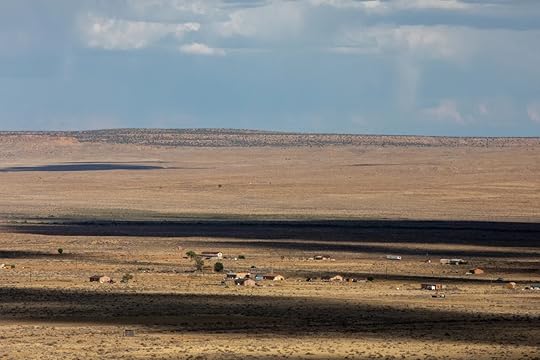
Under then-President Joe Biden, Congress passed the Inflation Reduction Act in 2022, providing nearly $2 billion to tribes to invest in renewable energy.
The Hopi were approved for a $25 million grant to install solar panels and battery storage for around 600 homes through a program called Solar for All.
But in August, the Trump administration terminated the Solar for All program, calling it wasteful.
Now, the tribe will be lucky to power around 100 homes from a much smaller pot of funding through a federal grant from the Tribal Electrification Program. Hopi officials say they will now have to decide who gets power and who doesn't.
"That's hard news to deliver, man," says Nuvangyaoma, "especially when you offer somebody hope and they're thinking, 'All right, finally we're getting somewhere' — and then the rug gets pulled out from them."
Questions? EMAIL: tracelara@pm.meTrace A. DeMeyer's Blog
- Trace A. DeMeyer's profile
- 2 followers



